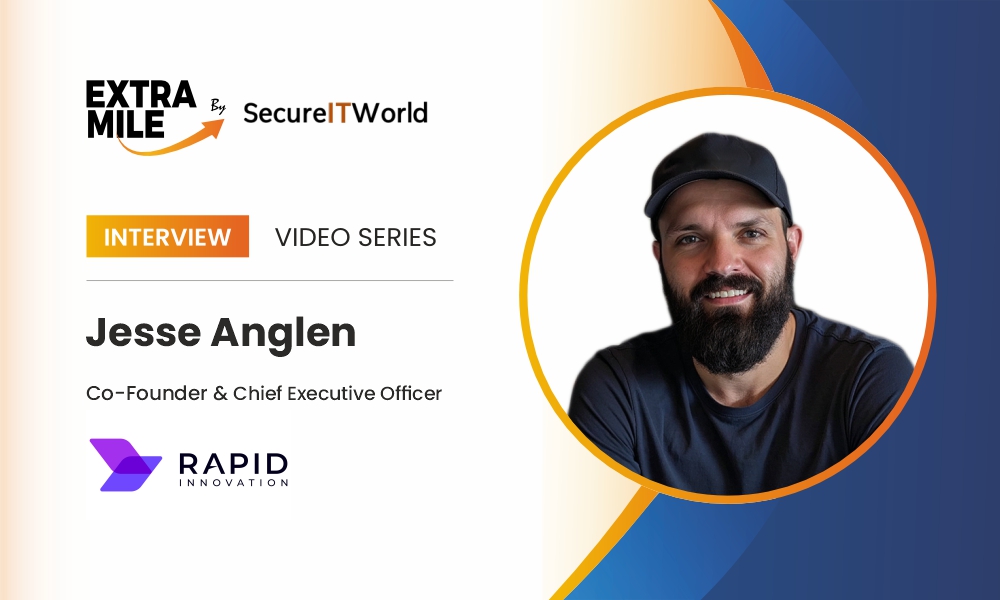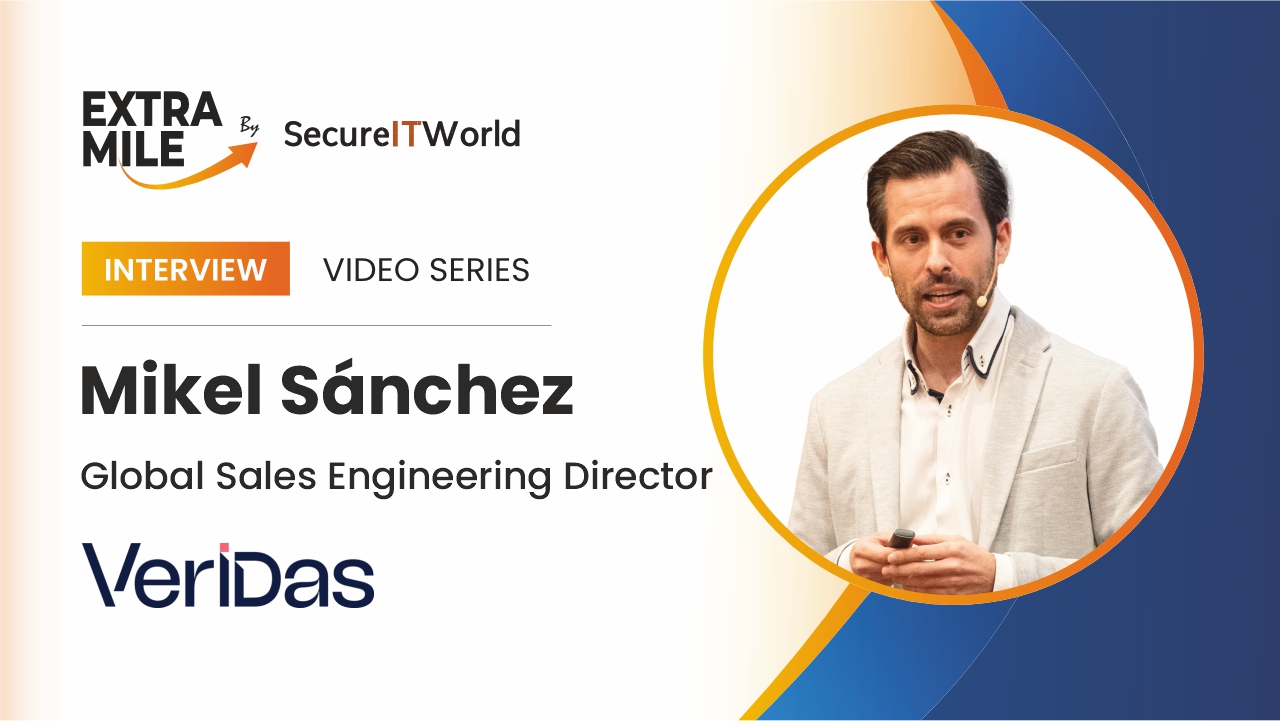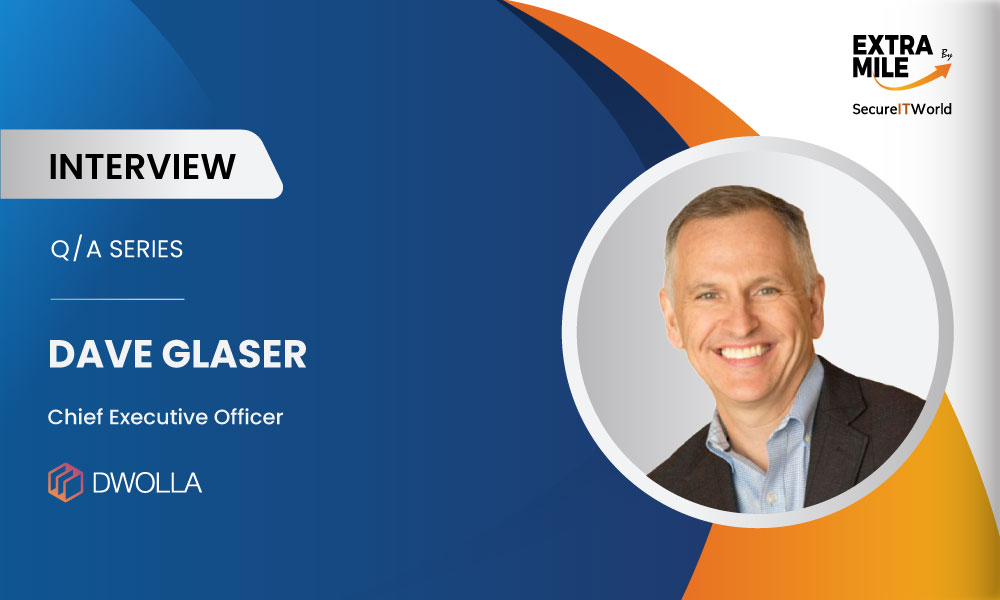ExtraMile by SecureITWorld, an extensive Q&A series, features industry leaders who share their expertise, insights, and visions shaping the tech spectrum.
For this very edition, we are delighted to host Ido Wiesenberg, CEO and Co-Founder of Voyantis, a pioneer in LTV predictions. The firm offers AI value-based optimization, empowering businesses to improve their unit economics. Their unique approach helps organizations identify, obtain, engage, and retain the most valuable customers.
Ido has been a key contributor to Voyantis’ progression since its inception. His customer lifetime value-driven strategies and future-centric approach are nothing but the driving factors for Voyantis’ growth. With breakthroughs in entrepreneurship and the technology sector, Ido has reflected robust leadership skills and innovation, which has led him to accomplish several achievements and recognitions.
Dive into his expertise in entrepreneurship alongside attaining insights into Voyantis’ services and customer lifetime value.
Welcome, Ido; thank you for joining us today!
1. You have had a remarkable career as an entrepreneur, from creating startups to heading a successful AI-based company. What led you to venture into the realm of predictive and prescriptive AI at Voyantis, and how did you realize the need for this type of technology?
Ans. To explain why predictive AI and why I co-founded Voyantis with Eran Friendinger, we need to go back to the beginning. I’ve been immersed in marketing and growth since the start of my career—first in the creative space, working with top ad agencies, then founding Frido, a boutique digital marketing firm. That led me into video and websites, and ultimately, co-founding Tvinci, an OTT TV solution acquired by Kaltura in 2014.
For over 20 years, I’ve helped companies grow, and one challenge has always stood out—every marketer wants to acquire the best customers, but doing so is easier said than done.
Some companies with strong data teams can analyze LTV and measure ROAS for their existing users, but predicting customer value at the top of the funnel—before or right after acquisition—was nearly impossible. Even harder was getting ad networks like Google or Meta to optimize for those high-value users.
These platforms have powerful algorithms, but they’re missing a crucial piece of the puzzle: what happens after acquisition? Did a user convert, upgrade, refer others, or make repeat purchases? This data isn’t fed back into the ad networks in a way that truly closes the loop—and how you report it makes all the difference.
That’s why we built predictive AI—to identify high-value customers before they convert. Then, we expanded into prescriptive AI, ensuring platforms like Google, Meta, Braze, and Salesforce act on that intelligence, giving them specific automated actions for growth optimization. Voyantis exists to help brands acquire customers who matter—at scale.
2. Your solution assists companies in forecasting customer lifetime value (LTV) and maximizing their growth strategy. Can you share an example of how your solution impacted a client in increasing their revenue or lowering their costs?
Ans. Absolutely! We work with amazing brands across various verticals in both B2B and B2C. It’s incredible to see how we help SaaS and PLG companies like Miro and HoneyBook acquire high-value customers while also boosting growth for consumer brands like MoneyLion, Rappi, and Current.
In B2B, Miro, a leader in virtual collaboration, wanted to drive more enterprise-level subscriptions. By supporting them with our Predictive AI, identifying customers more likely to convert, and helping them shift their Google campaigns to value-based bidding, we helped them unlock 30% more corporate paying customers, increase annual plan adoption by 35%, and grow seats per account by 14%—huge wins for a SaaS brand.
There’s a misconception that value-based optimization means higher CAC, but that’s not what we see. With Rappi, a leader in food delivery, we helped bring LTV into every aspect of their growth. Their goal was to acquire frequent, high-value customers and drive activation. By optimizing their Google App Campaigns with intent predictions, we reduced CAC by 28% and increased ROAS by 30%. Beyond acquisition, we helped boost activations through Braze campaigns, driving 10% more order activations and an 11% increase in repeat customers.
All in all, our clients see lower costs and higher revenue—proving that value-based acquisition isn’t just about getting better customers, but also about scaling profitably.
3. Congratulations for being recognized by Forbes as one of the most promising Israeli entrepreneurs. How has this affected your aspirations, and what does it mean to you?
Ans. Thank you, and I truly appreciate Forbes for this recognition. While accolades are always appreciated, it’s important to stay focused on the bigger goal—creating value for investors and empowering the team to execute on that vision.
The road to success is often challenging, and at times, it can feel lonely for entrepreneurs and demanding for teams. That’s why I believe in celebrating wins together and recognizing the dedication, resilience, and hard work that make those successes possible.
4. Your firm just received major funding of USD 41 Million, headed by Intel Capital. How does this reflect on Voyantis' future?
Ans. First, I want to thank our investors for their continued support and Intel Capital for trusting us with this new Series B round. This investment follows a remarkable 2024, where we built a sales team from the ground up, launched a demand generation engine, and tripled both our ARR and customer base for the second year in a row. It’s been an intense journey, but the growth and market validation have made it all worthwhile.
Intel Capital recognized Voyantis as a key player in vertical AI, investing in our AI-driven approach to marketing and growth—helping businesses scale efficiently. Their trust, along with the results we’ve delivered, reinforces that we have what it takes to push AI-powered growth solutions even further. And the best part? We’re just getting started—full steam ahead to make 2025 even bigger and better.
5. Many companies are moving away from legacy cost-per-action (CPA) models and moving toward value-based approaches. Why is this transition so important, and How does your model make it simpler for businesses to make the change?
Ans. No two users are the same—so why spend the same on all of them? If one user will drive a higher ROI, why allocate an equal budget to someone who will never purchase or subscribe? The sooner you identify a user’s true value in their journey, the better you can maximize ad spend and long-term revenue.
This isn’t about ignoring costs—it’s about balancing cost with value. Many companies are starting to recognize this and want to move beyond CPA models, but it requires education and execution.
Why isn’t every marketer doing this? Because it’s not that simple. To make value-based optimization work, you need to communicate user value to Google and Meta from day one. But what if conversions happen weeks—or even months—later? That’s where predictive AI comes in.
Many companies struggle with limited data, but we know how to generate precise predictions using minimal, non-PII signals. Then comes the challenge of feeding these insights into ad network algorithms—timing, value, frequency, and more. We’ve cracked that too.
AI-driven growth isn’t a one-and-done setup—it’s a living system. That’s why we provide continuous monitoring and AI model training to keep performance sharp. Many companies don’t have a dedicated data science team for campaign optimization, ad network algorithm experts, or the ability to sustain the upkeep of all these models—so we handle it for them.
6. As a Techstars mentor, you have worked with so many startups. What is the most prevalent issue that early-stage companies struggle with, and what would you advise them to overcome it?
Ans. One of the biggest mistakes early-stage startups make is falling in love with an idea before validating the problem. Too often, founders build solutions that sound great in theory but don’t address a real market need.
My advice? Stay as close to the market as possible. Engage with potential customers early, build strong relationships with design partners, and continuously gather feedback. The ability to pivot based on real demand separates successful startups from those that burn resources on the wrong problem.
Equally important is building a trusted network—mentors, industry experts, and even critical customers—who challenge assumptions and provide honest feedback. The best insights don’t always come from what you want to hear but from what you need to hear.
7. Your work with well-known clients involves a great deal of trust and tailoring. How do you balance ensuring your solutions fit their specific requirements without sacrificing scalability for other companies?
Ans. Scalability is a cornerstone of our product and customer strategy at Voyantis. We invest significant time and resources into ensuring our solutions scale effectively.
At the same time, we work with a diverse range of B2B and B2C customers—but even that is intentional, focusing on specific verticals where we can drive real value, such as businesses with long payback periods and delayed conversion events.
This is why design partners and pilot programs are crucial. Running small experiments and tests helps validate feasibility while identifying repeatable patterns ensures we’re investing in the right opportunities.
8. If you were not in tech or working on your current business, what do you think you might have done, and why?
Ans. I’ve always had an entrepreneurial spirit and come from a family of creatives—my father and brother are musicians, and my mom is a choreographer. If I weren’t in tech, I’d likely be doing something at the intersection of art and business.
Discover More In-depth Interviews:
Navigating the Future of Data Streaming with Alexander Walden, CEO of Ververica












